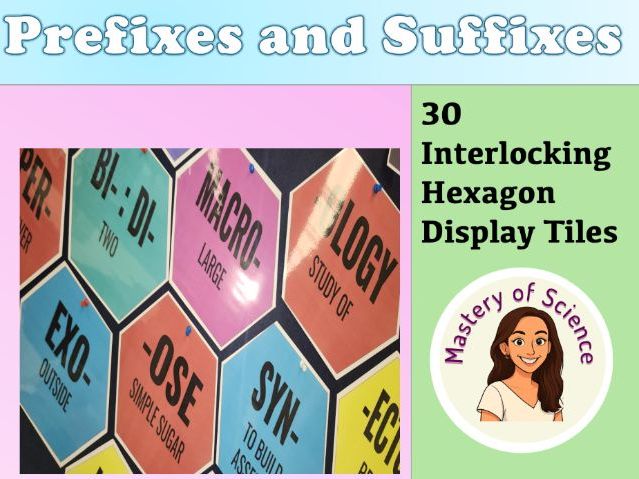58Uploads
42k+Views
28k+Downloads
Chemistry

C9: Chemistry of the atmosphere (AQA 9-1) Chemistry
Please leave a review!
Revision MAT for C9 Chemistry of the Atmosphere. Can be used for triple science or trilogy.

Oxidation Reactions KS3
Suitable for years 7-9.
Differentiated resource with practical, questions and answers.

Displacement reactions KS3/ low ability GCSE
This is a suitable lesson for KS3 or a low ability GCSE group. The lesson has the following format:
- Do now: recap of reactions between metals and acids (with answers)
- Activity 2: displacement reactions. I have included various different methods of explaining what a displacement reaction is. These include âdisplacement discoâ (taken from a resource years ago), football displacement, role play, spot the mistake, find the fib
- Activity 3: Class practical (technician notes attached)
- Activity 4: Consolidate questions, including a challenge (with answers, no answer for challenge in this lesson)
- Plenary: choice of two activities- will a reaction take place? And âexplain what happened when the iron was placed in copper sulphate solutionâ

Exploring Combustion KS3 Chemistry
This is a fully differentiated resource that I created for my year 8 group. There are a range of activities, all with answers.

Metals and Non Metals
This is a suitable lesson for KS3 or a low ability GCSE group. The lesson has the following format:
- Differentiated learning objectives
- Do now: true or false
- Activity 1: looking at key word and comparing properties of metals and non metals
- Activity 2: Carousal activity (technician notes, student worksheet and answers attached)
- Activity 3: consolidate questions
- Plenary: choice of either bingo or mini quiz
All questions are differentiated and have answers.

Making Salts Revision New GCSE AQA (9-1)
Revision lesson
Lesson format:
Do now: differentiated questions (with answers)
Main: choice of five tasks (grade 4, 5, 6, 7, 8). Students can start at different tasks depending on their ability. (this lesson requires some prep; you will need to print out slides 8-16 preferably on different coloured paper). Students pick up a task and when they have completed it, they can self-assess using the answers attached)
Plenary: differentiated questions (compare with understanding at the beginning compared to now)

KS1/ Year 2 Science Activity Pack
I planned a science morning at my school for the year 2 students. There were three different activities and the students rotated to different classes.
Attached is a PowerPoint and a booklet that students can work their way through.

Human impact: Does carbon dioxide affect the pH of seawater and the strength of shells?
This was a series of 5 lessons in the âOur Worldâ topic. Students had covered the carbon cycle, and factors that increase the levels of carbon dioxide.
We then worked through the attached PowerPoint and booklet to investigate how pH can affect the strength of shells.
Within the booklet there are detailed instructions on three different practicals.
This required very little input throughout the lessons as the students worked through the booklets independently.

KS1 / Year 1 Science Activity pack
I planned a science morning at my school for the year 1 students. There were three different activities and the students rotated to different classes.
Attached is a powerpoint and a booklet.

Using Indicators
Differentiated resource containing a 'Do Now', Main Task, Practical and Plenary (all with answers)

Metals and acids
This is a suitable lesson for KS3 or a low ability GCSE group. The lesson has the following format:
- Choice of two tasks depending on ability.
- Activity 1: think-pair-share activity
- Activity 2: watch a video and write down the difference between a chemical reaction and physical change
- Activity 3: metals and acids reaction and naming salts (with questions and answers on slides)
- Activity 4: class practical with follow up questions (with answers) technician notes and worksheets attached.
- Plenary: differentiated questions or match activity

Exploring Neutralisation KS3 Science Chemistry
This is a fully differentiated resource that covers neutralisation and writing equations.
All activities have answers included. Technician practical sheet also included on last slide.

Introduction to Acids KS3
Fully differentiated resource with red/amber/green tasks used throughout.
Do now: would acids kill you? challenge included
Main: various activities including think-pair-share, comparing concentrated and dilute acids and differentiated questions with answers
Plenary: would drinking acid kill you? Students return to do now question.

C9: Chemistry of the Atmosphere L1: Evolution of the atmosphere (AQA new 9-1 GCSE)
Starter: key question to get them thinking
Main: video providing overview of the process, information regarding the key points, cut and stick acitvitiy with challenge, differentiated questions and answers.
Plenary: exam question with mark scheme
Please leave a review!
Bundle

Reactions: metals, oxidation, displacement and acids and alkalis
This is a fully differentiated resource for the topic âReactionsâ. This is suitable for KS3 or a low ability GCSE group. Each lesson consists of the learning objectives, a starter, a main activity and a plenary. Some PowerPoints have extension slides to stretch the most able. All practicals have a full method with them and 99% of the questions have answers too. These resources are differentiated and are very good for mixed ability classes. The lessons are as follows:
Lesson 1: metals and non-metals
Lesson 2: metals and acids
Lesson 3: Displacement reactions
Lesson 4: Oxidation reactions
Lesson 5: Exploring acids
Lesson 6: Exploring alkalis
Lesson 7: Using indicators
Lesson 8: Exploring neutralisation
I have also included a homework booklet with answers and a MAT (modular assessed task which can be used midway through the topic to check understanding. Please leave a review!

Reactions Homework: properties of metals, displacement reactions and acids and alkalis.
This resource has three homeworks within the booklet:
Homework 1: Properties of metals
Homework 2: Displacement reactions
Homework 3: Acids and Alkalis (with neutralisation equations)
Answers for every homework given.

Assessed Task: Definitions, Oxidation and Displacement reactions
An assessed task that can be used in the middle of the âReactionsâ topic (bundle on TES).
Answers and student feedback sheet included.

Introduction to Alkalis KS3 Chemistry
Fully differentiated resource with red, amber and green tasks throughout.
Do now: sort the pictures into alkalis and acids. Challenge included.
Main: various activities including RAG questions (with answers) and a literacy task which is differentiated.
Plenary: pick the odd one out

Word Wall: Suffixes and Prefixes
Brighten up your science classroom with this eye-catching Prefixes & Suffixes Word Wall Display!
Featuring 30 hexagon-shaped tiles, this resource includes commonly used prefixes and suffixes found in science vocabulary- ideal for reinforcing key terminology across biology, chemistry, and physics.
The interlocking hexagon design makes it easy to create a cohesive and flexible display. Use it to help students break down scientific terms and build confidence with subject-specific language.
Includes:
⢠30 printable hexagon tiles with science-related prefixes and suffixes (e.g., micro-, thermo-, -logy, -cycle)
⢠Clear, bold fonts for readability
⢠Tips for layout and classroom display ideas
Perfect for:
⢠Vocabulary walls and science displays
⢠Supporting students with subject-specific language
⢠Lower secondary and middle school science classrooms
⢠Visual learners and EAL students
An easy, low-prep resource that helps students decode and understand scientific vocabulary- just print, cut, and display!




















